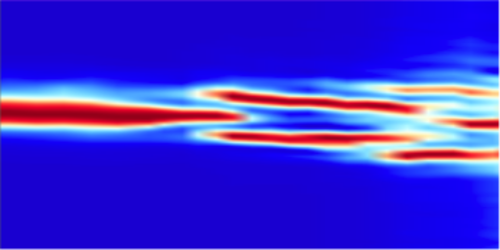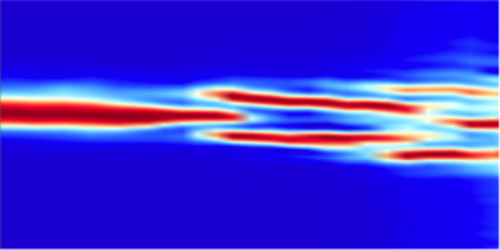Shaping X-Ray Pulses
The outer electrons of atoms and molecules can be manipulated using pulses from standard visible lasers with spectrally or temporally tailored profiles. Inner (core) electrons, on the other hand, require shorter wavelength x-ray pulses, which are harder to shape. Now David Gauthier, from Elettra Synchrotron Light Laboratory in Italy, and colleagues have shown that the extreme ultraviolet light beam of a free-electron laser (FEL) can be shaped to have any temporal or spectral properties. Their method should be extendable to x rays, opening the door to new ways to probe and control the dynamics of core-level electrons in atoms and molecules.
FELs generate light by passing bunches of electrons through an array of magnets with alternating polarity. Recent research has shown that the fluctuations and coherence of the FEL pulses can be significantly improved using a “seed” laser to control the electron bunches. The amplitude and phase of this laser can be directly transferred to the electrons, which then emit photons with the same well-defined properties.
Gauthier and colleagues have taken this approach one step further, showing that a seeded FEL can go from a single pulse to a pattern containing multiple pulses by adjusting parameters like the amplitude of the seed laser’s electric field. They also demonstrate that the FEL can generate Fourier-limited pulses—the shortest possible pulses for a given spectrum—and suggest that the FEL could be made to replicate any temporal pattern, as well as complex structures with precisely tailored spectral content.
This research is published in Physical Review Letters.
–Katherine Wright





